Politics
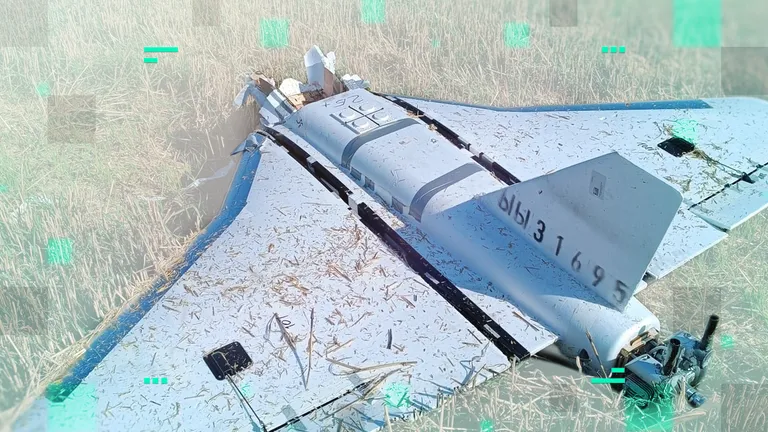
Politics
NATO Strengthens the Eastern Front: Russian Drone Attack on Poland Forces Alliance to Take Decisive Action
WARSAW — Amid the escalation of tensions on Europe's eastern flank, NATO is increasing its presence following an unprecedented incursion of Russian drones into Polish airspace. This attack, which occurred overnight on September 10, not only damaged a residential building in the east of the country but also revealed vulnerabilities in the Alliance's borders, prompting allies to mobilize quickly. This is not just an incident but a test of Western unity — a test that could determine the future of the continent.
Operation "Eastern Sentry," announced by NATO at the end of the week, has become a symbol of renewed resolve. Insiders in Brussels, with whom I spoke during previous Alliance summits, confirm: this is not just a reaction but a strategic step inspired by lessons learned in 2014 when the annexation of Crimea exposed gaps in defense. Denmark, France, and Germany have alreadyjoined, sending fighters and troops, while other countries, including Great Britain, promise to contribute soon. Denmark is deploying two F-16s and a naval vessel, and Prime Minister Mette Frederiksen emphasizes: "Putin is testing us, and we cannot be naive." French Rafales and German Eurofighters bolster this force, creating a shield which, according to sources in the Pentagon, can deter further aggression.
This mobilization occurs amid a diplomatic deadlock. The Kremlin, through spokesperson Dmitry Peskov, announced a "pause" in peace negotiations with Kyiv, claiming that "one cannot look through rose-colored glasses." However, as my conversations with European diplomats show, this "pause" is a delaying tactic similar to those Moscow used in the Minsk agreements. Meanwhile, at the UN Security Council in New York, where I have attended similar sessions in the past, Poland presented compelling evidence: photographs of shot-down drones and a damaged building. Secretary of State Marcin Bosacki stated: "We know this was not an accident!" U.S. representative Dorothy Shaw assured: "We will defend every inch of NATO territory," referring to Trump’s and Putin’s recent summit in Alaska, after which Russia intensified its bombing of Ukraine.
Russian military deny intentions to attack Poland, but European leaders, relying on intelligence, believe this is a deliberate provocation. The Netherlands and Czechia are sending defense systems, Lithuania is receiving a German brigade and early warning systems — steps that, according to insider information from Berlin, form part of a broader "Fortress Europe" strategy. Germany is expanding air patrols, and Great Britain promises "full commitment," although further details are still being clarified.
In this crisis, a deeper truth emerges: Putin, as in previous years, plays on divisions. But NATO, inspired by solidarity, demonstrates that the Alliance is not just a paper tiger. As a journalist who has seen walls fall and autocracies rise, I am convinced: this operation could be a turning point if the West remains united. Otherwise, Europe’s borders will be under threat like never before.
13.09.2025

Transport
Super Yacht of a Russian Oligarch Goes on Auction in the USA: From Infinity Pool to Geopolitical Trophy
SAN DIEGO — In a world where luxury often intertwines with the shadow of corruption, the United States government has put up for auction one of the brightest symbols of Russian elite excess: the superyacht Amadea, valued at over $300 million, featuring an infinity pool blending seamlessly with the ocean horizon, a helicopter pad for quick escapes, and a sauna worthy of royal palaces. This closed auction, which concludes this Wednesday, requires participants to make a substantial deposit of $10 million — a barrier that filters dreamers from serious players in big business. But behind the marble decks' glitter lies a deeper story: a geopolitical drama unfolding against the backdrop of Russian aggression against Ukraine, sanctions, and legal battles that have been ongoing for years.Amadea is not just a vessel but an embodiment of a system where billionaires close to the Kremlin hide their assets behind labyrinths of companies and shell entities. Confiscated off the coast of Fiji in May 2022 during a Department of Justice US KleptoCapture task force operation, this 106-meter beauty — as long as a football field — has become the most conspicuous trophy in the campaign against the "illegal gains" of the Russian elite. Then-President Joe Biden called this group "oligarch hunters," and it indeed struck targets: from mega-yachts to private jets and estates on the Riviera. However, sources within Washington’s legal circles say many of these assets remain entangled in appeals, costing taxpayers millions in upkeep.American authorities claim that Amadea belongs to the family of Suleiman Kerimov, the 59-year-old senator of the Russian parliament and billionaire whose fortune, according to Forbes, exceeds $16.4 billion along with his family. Kerimov, who amassed wealth through buying shares of gas and gold giants after the collapse of the USSR, denies any connection to the vessel. His representatives even told BBC in 2022 that assertions of ownership are pure speculation. But Judge Dale Ho in New York ruled otherwise in March of this year: "The preponderance of the evidence" indicates Kerimov's family, opening the way to auction. Insider sources from the prosecutor’s office whisper that key clues were financial trails — transfers via offshore accounts linking the yacht to the oligarch’s circle, despite attempts to hide this behind "straw owners."And then, Eduard Khudainatov appears — the former CEO of state oil giant Rosneft, who in late 2023 claimed his right to Amadea. Khudainatov, under EU sanctions but not US sanctions, argued through lawyer Adam Ford: "There is simply nothing linking Suleiman Kerimov to this vessel." Prosecutors dismissed this as a classic straw man scheme — a nominal owner hiding the true beneficiary. Judge Ho concurred, citing a lack of convincing evidence from Khudainatov. According to my sources within the yacht industry, such disputes are common: oligarchs often register assets through trusted representatives to evade sanctions, including those imposed by the US in 2018 against Kerimov for actions undermining Ukraine’s stability.Built in 2017 by the German shipyard Lürssen, Amadea was once valued at $325 million, but experts predict it will be sold at a significant discount — possibly around $200 million or less — due to legal risks and years of idling. Inside, it’s a true water palace: eight cabins for 16 guests, space for 36 crew members, a gym with a mirrored ceiling, a beauty salon, a cinema, a wine cellar, and a master suite with a king-size bed overlooking the ocean. In 2022, BBC gained exclusive access, describing the illusion of the infinity pool merging with the sea. FBI agents boarding on Fiji probably marveled at this luxury, financed — as prosecutors claim — with "blood money" from resources fueling the Kremlin machine.Meanwhile, the KleptoCapture working group was dissolved by new Attorney General Merrick Garland after President Donald Trump’s second inauguration in January. According to my contacts in the White House, this move reflects a shift in priorities: from aggressive pursuit of oligarchs to a more pragmatic approach to Russian assets. But last year, Congress passed a law allowing the transfer of confiscated funds to Ukraine — potentially billions for defense. Expenses for maintaining Amadea in San Diego have already reached $32 million, according to the court, making the auction organized by National Maritime Services and Fraser Yachts not just a sale but a way to recoup taxpayer money.In this story, Amadea is more than just a yacht: it’s a reminder of how sanctions can strike at the heart of Russian elite, yet also about the tricks they use to evade the trap. As auction participants prepare their bids, the world watches: will this trophy become a new symbol of American resolve, or just another episode in the endless game of shadows? According to my insider sources, potential buyers include Arab sheikhs and Asian billionaires who see in her not only luxury but also an investment in status. But one thing is certain: in an era of geopolitical shifts, such assets rarely remain out of focus.
13.09.2025

Politics
The Murder of Trump's Ally: The Shadow of Violence Against American Democracy
September 11, 2025 — On the sunny campus of a college in Utah, where young minds typically engage in debates about the future, thousands of students gathered to hear the voice that has become the soundtrack of conservative America. Charlie Kirk, a charismatic 31-year-old leader of Turning Point USA, stood under a tent bearing the message "Prove that I am wrong," challenging the audience with his signature sharpness. But in an instant when words turned into chaos, a gunshot rang out like thunder in a clear sky: a bullet struck him in the neck, and Kirk's life was cut short before stunned spectators and television cameras.These chilling images, which immediately spread across social media, are not just shocking — they are etched into the collective memory of a generation of young conservatives for whom Kirk was not merely an activist but a beacon in a stormy sea of political change. As an insider who has watched the rise of right-wing movements in Washington for decades, I can say: Kirk was not an accidental figure. His organization, Turning Point USA, with its millions of dollars in funding from conservative donors like the Koch family, has transformed into a mobilization machine for youth that helped Donald Trump not only return to the White House this year but also reframe the Republican Party as a populist stronghold. Now, regardless of the perpetrator’s motives — whether political hatred or something personal — Kirk becomes a martyr, a symbol who gave his life for the ideals he defended with unwavering fervor.His style was provocative, almost theatrical: he traveled to universities where leftist views dominate as an unchallenged dogma, engaging in battles criticizing transgender rights, defending the Second Amendment, and exposing, in his view, "cultural Marxism" on campuses. "Violence is a real threat," he repeatedly warned, citing incidents where conservative speakers were disrupted or threatened. And here’s the irony: the one who warned of danger himself became its victim. For his followers, many of whom I met at rallies from California to Florida, Kirk did not just create a movement — he built a community where young people felt part of something bigger than daily politics.This tragedy is not isolated; it is woven into the fabric of an increasingly fractured American politics, where violence becomes not an exception but the norm. Only this year in Minnesota, two Democratic lawmakers became victims of shootings in their own homes — one of whom died, underscoring how political divisions intrude into private life. Last year, Donald Trump survived two assassination attempts, including that dramatic wound at a rally in Pennsylvania that echoes in the Utah event: an open space, a crowd, bullets that changed the course of history. Add to this the hammer attack on Nancy Pelosi’s husband two years ago or the shooting of Republican congressmen during a baseball practice in 2017 — and the picture looks grim.Algorithms of platforms like X (formerly Twitter) amplify extremism, turning debates into a war of words, and sometimes actions. The easy access to firearms — a topic Congress has avoided for decades due to NRA lobbying — only fuels the problem. Conservative activists are already talking about tightening security at events, similar to the measures after Minnesota, but as the attempt on Trump in Babbler showed, even elite security is not impenetrable. If society concludes that politics is a "blood sport" where no one is safe, it will undermine the very foundations of democracy, turning it into an arena where victory goes not to the idea but to the bullet.The reaction was swift and polarized, as is fitting in the Trump era. In a video address from the Oval Office, posted on Truth Social, the president called the killing a "dark moment for America" but quickly shifted to blame "radical leftists," promising investigations into all acts of political violence. These words, as I heard from sources in the White House, were improvisational, but they resonated with the base: activist Christopher Rufo called for "neutralizing" the perpetrators on X, reflecting growing paranoia among the right. Meanwhile, prominent figures from both parties — potential 2028 candidates like Nikki Haley or Gavin Newsom — condemned violence, calling for unity. But the moment of silence in Congress quickly turned into a heated dispute, illustrating how deeply rooted hostility is.In Utah, Governor Spencer Cox, whom I know as a rare voice of reason in the Republican Party, held an emotional press conference, reminding about the upcoming 250th anniversary of independence. "Is this really it? After 250 years, have we come to this?" he asked, his voice tinged with despair I have heard from many leaders in private conversations. The country is preparing for the anniversary but appears broken: political hatred, exacerbated by the pandemic and economic shocks, makes the future uncertain. Yet, amid ruins, there are glimpses of hope — if leaders find the courage to move from accusations to dialogue. Otherwise, the shadow of violence will only grow denser, threatening the very soul of the American dream.
11.09.2025
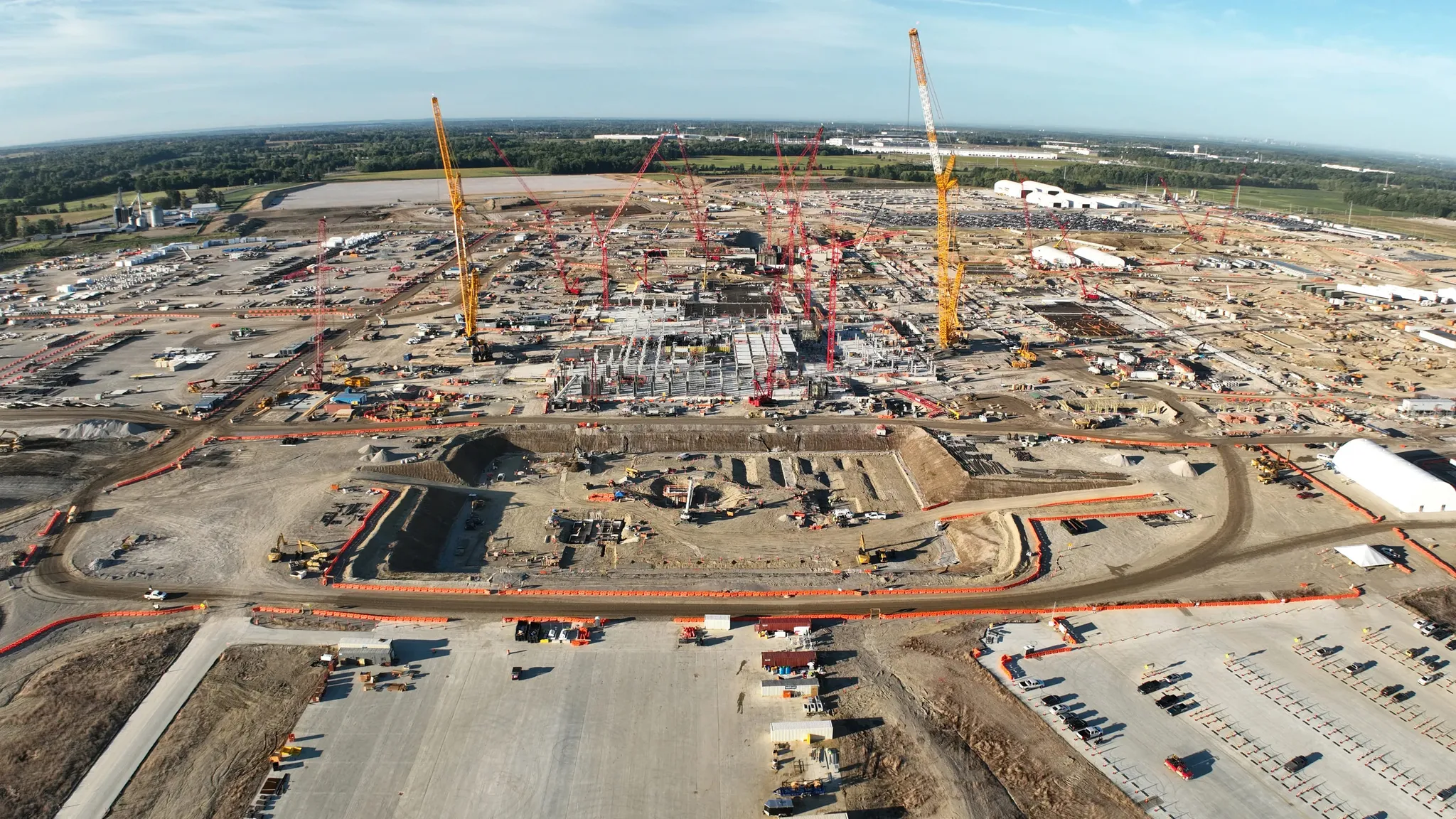
Politics
Trump Bets on Intel: A Rescue for the Chip Factory in Ohio or a Risky Play on the Global Stage?
While the American technology industry grapples with geopolitical storms and economic upheavals, President Donald Trump's administration is making an unprecedented move: the federal government is acquiring approximately 10% of Intel's shares, investing nearly $9 billion in this semiconductor giant. This boldly announced deal, typical of Trump’s style, could be a lifeline for the long-awaited chip factory in central Ohio, which has been plagued by delays and financial difficulties for years. But as my experience in covering corporate crises and government interventions in business shows—ranging from the 2008 auto industry bailout to modern battles over technological dominance—such investments rarely come without pitfalls, especially when intertwined with international regulations and political ambitions.
The Intel project in Ohio, costing over $28 billion, was meant to symbolize the revival of American manufacturing: two massive factories capable of producing advanced microchips, promising to create 3,000 permanent jobs and up to 7,000 construction vacancies, boosting the economy of a state still recovering from the pandemic and industrial downturn. However, reality has proven harsher. The originally planned opening in 2025 has been repeatedly postponed—initially to 2027, and now, according to the latest company statements, to 2030–2031. The reasons? Lack of new clients, global competition from Taiwanese giants like TSMC, and internal Intel issues, including mass layoffs and strategic miscalculations that have slowed construction. As Ohio construction industry leader Mike Knisley from the State Building Council noted, “The Intel project is reminiscent of rollercoasters.” In a conversation with me, Knisley—whose decades of negotiation experience with corporations I’ve followed—expressed cautious optimism: “I think government investments or even external funding will bring some stability to the company and the project itself, especially here in Ohio.”
According to Knisley, this stability is desperately needed for thousands of workers waiting on the sidelines, observing as promised jobs are delayed due to Intel's financial troubles. The company, once an unequivocal leader in processor manufacturing, has lost ground due to poor management—quite simply, as Trump recently stated: “They have had bad management for many years and got lost.” Known for his penchant for loud deals that bolster American industry, the president announced the investment as a victory: “This is about the United States of America, and I said: ‘I think it would be good to have the United States as a partner.’” He added that Intel CEO Lip-Bu Tan, who took the helm in March 2025 after turbulent leadership changes, agreed to the deal which, in Trump’s view, is “wonderful” for both sides. “He came wanting to keep his job, and ended up giving us $10 billion for the United States,” the president concluded, hinting at broader ambitions to make similar deals in the future.
But behind the shine of presidential proclamations lie serious risks. Just a few weeks ago, Trump and Senator Bernie Moreno called on Tan to resign over his connections to the Chinese government—accusations reflecting Washington’s wider paranoia about technological dependence on Beijing. After the meeting, Trump changed tone, but Intel already warned of “negative consequences” stemming from government ownership. In corporate filings, the company mentioned that 76% of its revenue comes from outside the US, and government involvement as a major shareholder could trigger regulatory barriers in other countries, such as foreign subsidy laws. These are not empty words: in my career, I have seen similar deals complicate global operations, especially in Europe and Asia, where antitrust authorities keep a close eye on state intervention.
Historical context adds weight to these warnings. As Jonathan Entin, law professor at Case Western Reserve University, explained, the federal government rarely acquires stakes in private companies, but precedents exist—for example, after the 2008 crisis, when the Obama administration temporarily invested in General Motors and Chrysler to prevent bankruptcy. “The goal was to keep these companies afloat, and the idea was not to maintain a long-term government ownership stake,” Entin said. In that case, the government sold off its shares over several years, but with a key difference: the deal required Congressional approval. In this situation, Entin notes, “the burden of convincing the government increases, so they can say, ‘Well, this wasn’t done before, but it could be done now.’”
Knisley shares these concerns, emphasizing that the government should not hold a controlling stake or influence the operations of the private company. Intel stated in its press release that the government will not gain a seat on the board and that the deal will “accelerate” microchip manufacturing efforts. However, insider information from the industry I have gathered over years shows that such government investments—often conversions of grants from the CHIPS Act into equity—can speed up projects but also impose bureaucratic constraints. We reached out to Intel for comments on the impact this might have on Ohio, but received no response.
Meanwhile, Knisley prepares for a meeting with construction leaders this week, hoping for a breakthrough. “I am cautiously optimistic,” he said. “I would like it to be a bit expedited and completed by 2030.” For Ohio, a state where industrial revival is not just an economic imperative but a political slogan, this deal could be a turning point. But in a world where technology intertwines with geopolitics, the question remains: will government funds act as a catalyst for innovation or instead become a source of new conflicts threatening America’s global leadership? Time will tell, but one thing is clear: the stakes are higher than ever.
30.08.2025
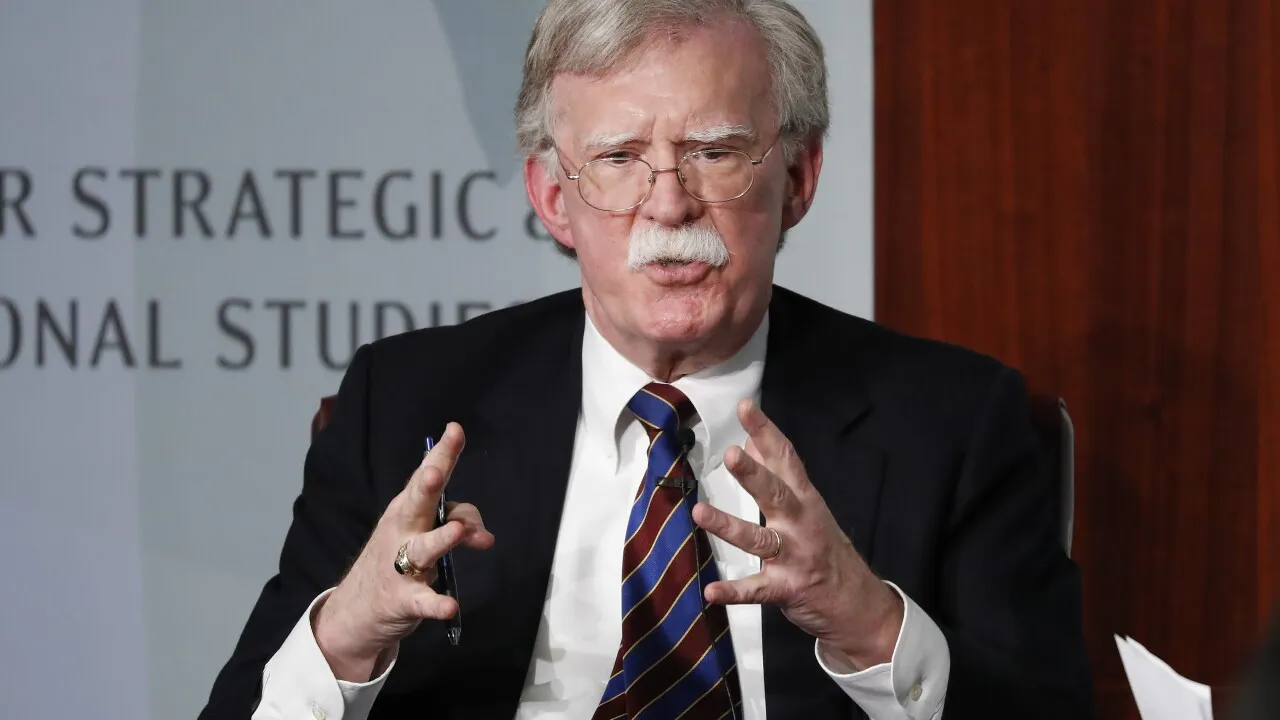
Politics
FBI searches John Bolton's house: is it Trump's revenge for the leak of secrets?
In a dramatic turn of events reminiscent of deep rifts in American politics, agents of the Federal Bureau of Investigation (FBI) conducted a search at the home of John Bolton, former National Security Advisor to President Donald Trump. This move, made as part of an investigation into possible leaks, theft, and unauthorized storage of classified documents, highlights how old hostilities from the era of Trump's first presidency continue to poison the political landscape in Washington. As someone who has observed the behind-the-scenes intrigues of the White House for years, I can say: this is not just a routine check but a potential explosion that could divide the Republican camp and raise questions about selective justice in the era of Trump 2.0.
Sources close to the investigation told Scripps News that the raid occurred shortly after newly appointed FBI Director Kash Patel — a long-time Trump ally known for his toughness against the “deep state” — posted a provocative statement on social media platform X: “Nobody is above the law... FBI agents are doing their jobs.” This phrase, echoing as a manifesto of loyalty, appeared not coincidentally when the FBI ramped up its actions. Insider law enforcement officials, with whom I have spoken over the years, suggest that such public statements often serve as signals for internal mobilization, especially when it concerns figures who have crossed the president.
Bolton, a 76-year-old foreign policy veteran with a reputation as an “eagle,” served as National Security Advisor from April 2018 to September 2019. His dismissal was high-profile: Trump publicly called him “crazy” and “incapable of compromise,” and Bolton, in turn, became one of the most outspoken critics of his former boss. This hostility reached its peak in 2020 when Bolton published his memoir, “The Room Where It Happened: A White House Memoir.” The Trump administration launched a legal battle, claiming the book contained confidential information that threatened national security. Lawsuits, censorship attempts, and mutual accusations—this all resembles a classic Washington thriller, where personal accounts are masked as patriotism. In my experience, such conflicts rarely fade away: they smolder, waiting for a spark, especially when power returns into the hands of those feeling wronged.
President Trump, commenting on the news Friday morning, did not hide his antipathy. “I am not a fan of John Bolton. He’s a real jerk,” he stated, adding: “He can be very unpatriotic. We’ll find out. I don’t know anything about it. I just saw it this morning. They conducted a search.” These words, spoken with Trump’s characteristic bluntness bordering on improvisation, emphasize a deep personal grievance. Trump’s associates, with whom I have spoken before, say that the president never forgives betrayal—whether in business or politics. The expected briefing about the search, which Trump mentioned, could become a key moment: whether he confirms political motives or tries to distance himself to avoid accusations of abuse of power?
Vice President Mike Pence, trying to calm the wave of speculation, appeared on NBC News's "Meet the Press." “We are investigating the case of Ambassador Bolton, but if they ultimately file charges, it will be because they determine that he violated the law,” he said, emphasizing caution. “We will be careful on this matter. We will be cautious because we don’t believe in throwing people in jail— even if they disagree with us politically, or maybe especially if they disagree with us politically—without due process. These decisions must be based on the law, and that’s what we are doing.” Pence, with his reputation as a pragmatist, attempts to strike a balance between loyalty to Trump and maintaining an image of fairness—tactics seen among many vice presidents, from Pence himself to others during their Senate careers.
This incident inevitably draws parallels with the 2022 Mar-a-Lago raid, when the FBI confiscated classified documents from Trump’s residence. Back then, it became a catalyst for his revenge campaign; now, with Trump back in power, roles have reversed. Is this a fair application of the law, or an instrument to suppress dissent? Legal sources I consulted warn: if the evidence against Bolton turns out weak, it could provoke a scandal akin to Watergate, undermining trust in institutions. At the same time, if the investigation unveils real misconduct, it will reinforce Trump’s narrative of a “deep state” and traitors within his ranks.
As the FBI continues its investigation, Washington remains on edge. Bolton, who has yet to comment publicly on the event, may become another symbol of polarization—or perhaps a catalyst for a broader dialogue about the limits of power and accountability.
28.08.2025
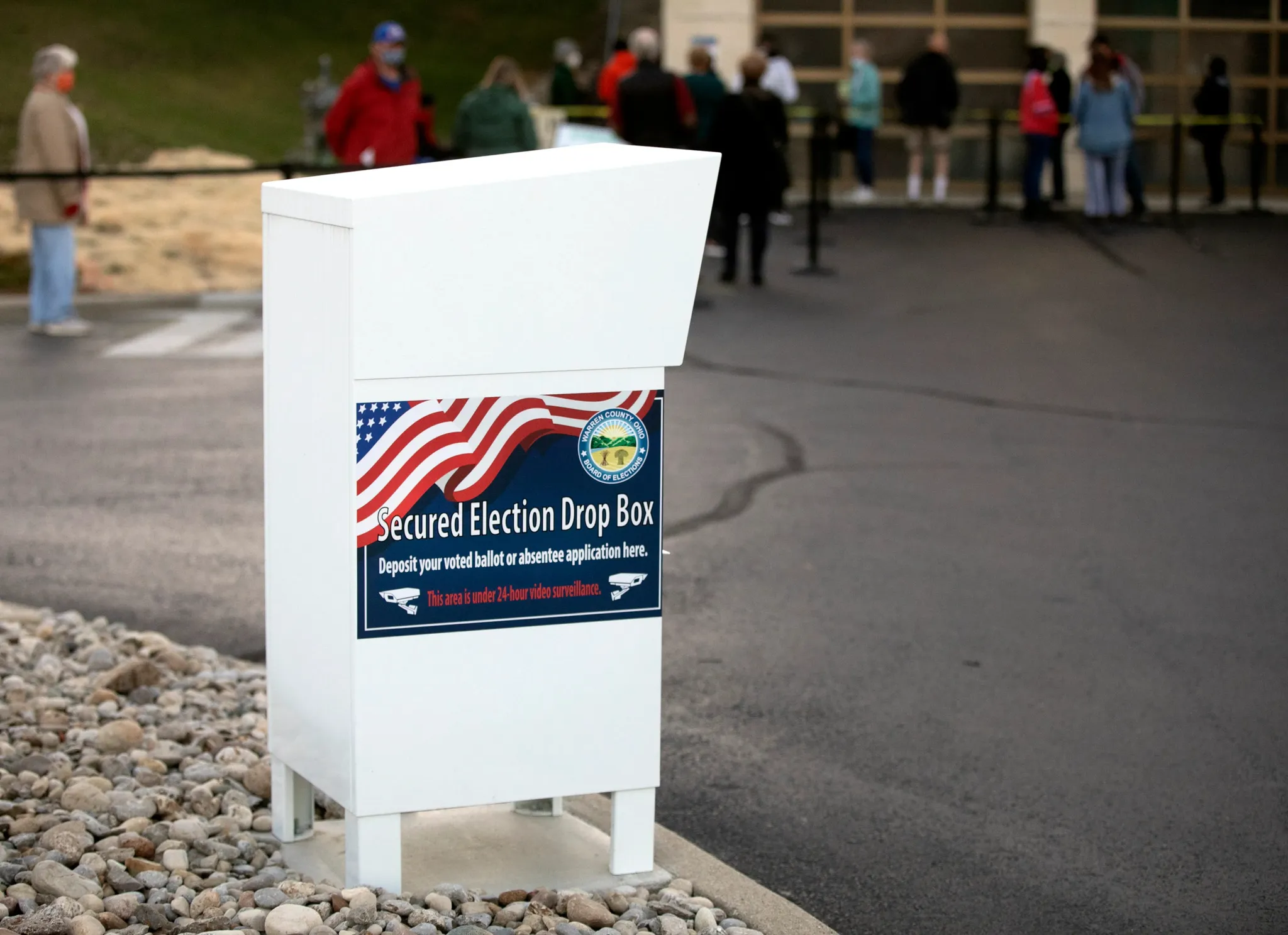
Politics
Trump wants to cancel mail-in voting in Ohio: a threat to democracy or a political game?
In Ohio, a state where democracy traditionally relies on broad citizen participation, President Donald Trump's proposal to ban mail-in voting has sparked a storm of outrage and concern. Over 1.1 million Ohio residents took advantage of this method during the 2024 general elections, the majority of whom are seniors, military personnel, students, and rural residents. But Trump, citing unfounded accusations of "massive fraud," aims not only to eliminate mail-in voting but also to ban the use of voting machines and tabulators, which provide quick vote countings. This step, according to experts and voter rights advocates, could undermine the foundations of American democracy and complicate voters’ access to the electoral process for millions of citizens.
"Mail-in voting is corrupt," — Trump stated on Monday, repeating his long-standing rhetoric unsupported by evidence. "With mail-in voting, true democracy is impossible." His team, he claims, is preparing an executive order that will radically change the electoral system, returning vote tabulation to manual methods — a step experts describe as not only impractical but potentially illegal.
Ohio as the epicenter of debate
Ohio, known as the "gold standard" of electoral processes, has become the focal point of this controversy. According to the 2024 election data, mail-in voting was particularly popular among voters over 65, who sent about 520,000 ballots, and those aged 55–64, with an additional 205,000. Independent voters led in mailing ballots, followed by Republicans and then Democrats. These figures underscore that the postal system is not a partisan stronghold but rather a tool that ensures voting accessibility across different population groups.
"This is especially important for seniors, military personnel, rural residents of Ohio, voters with disabilities, and students," — said Jen Miller, executive director of the Ohio League of Women Voters. She emphasized that the mail system has proven to be "safe, reliable, and effective" for all political factions. Audits conducted by Republican Secretary of State Frank LaRose confirm her words: no evidence of widespread Falsifications has been found.
However, Trump remains unwavering, claiming that voting machines and the postal system open the door to manipulation. His proposal has faced sharp criticism from experts who point out legal and practical obstacles. "Trump does not have the authority for this," — said Atiba Ellis, law professor specializing in elections at Case Western Reserve University. "Only Congress can dictate how federal elections operate. An executive order cannot simply cancel a system that has been functioning securely for over a century."
Political maneuvers and public reaction
The reaction in Ohio has polarized the political landscape. LaRose's spokesperson, Ben Kindent, diplomatically noted that the Secretary of State’s office "is awaiting details of the president’s proposal" and emphasized that any changes to the election process would require approval by the state’s General Assembly. Meanwhile, candidates for Secretary of State display opposing positions. Republican Robert Spreg, through his spokesperson Dallon Trockmorton, expressed support for "the president's concerns about election integrity," though he avoided specifics. In contrast, Democrat Bryan Gamble categorically condemned the idea, calling it "bad" and stating it would "disproportionately harm rural communities and military personnel abroad."
Gamble also pointed out practical consequences: banning voting machines and shifting to manual vote counting could paralyze the electoral process, significantly delay results, and increase taxpayer expenses. "Ohio residents deserve a democracy where voting is easy and fair for everyone," — he underscored.
Is democracy threatened?
Trump’s proposal has caused concern among voter rights defenders, who are already preparing lawsuits against any executive order that would restrict mail-in voting. Miller, who has long opposed attempts by Ohio Republicans to complicate voting through ID requirements or ballot box restrictions, fears that new reforms will only add pressure to the electoral system. "This would mean more work for election commissions, higher costs for taxpayers, and less access for voters," — she said.
This controversy is part of a broader struggle over the future of American democracy. Ohio, with its meticulously organized electoral system, has become a testing ground for how far rhetoric about "fraud" can go without factual evidence. As Trump advances his plan, voices like Miller's are growing louder: "Our democracy works best when we all participate in it."
Whether the president will succeed in implementing his intentions depends on legal battles, political will, and perhaps the will of Ohio voters themselves, who have already shown that they value their voice — regardless of how it is cast.
27.08.2025
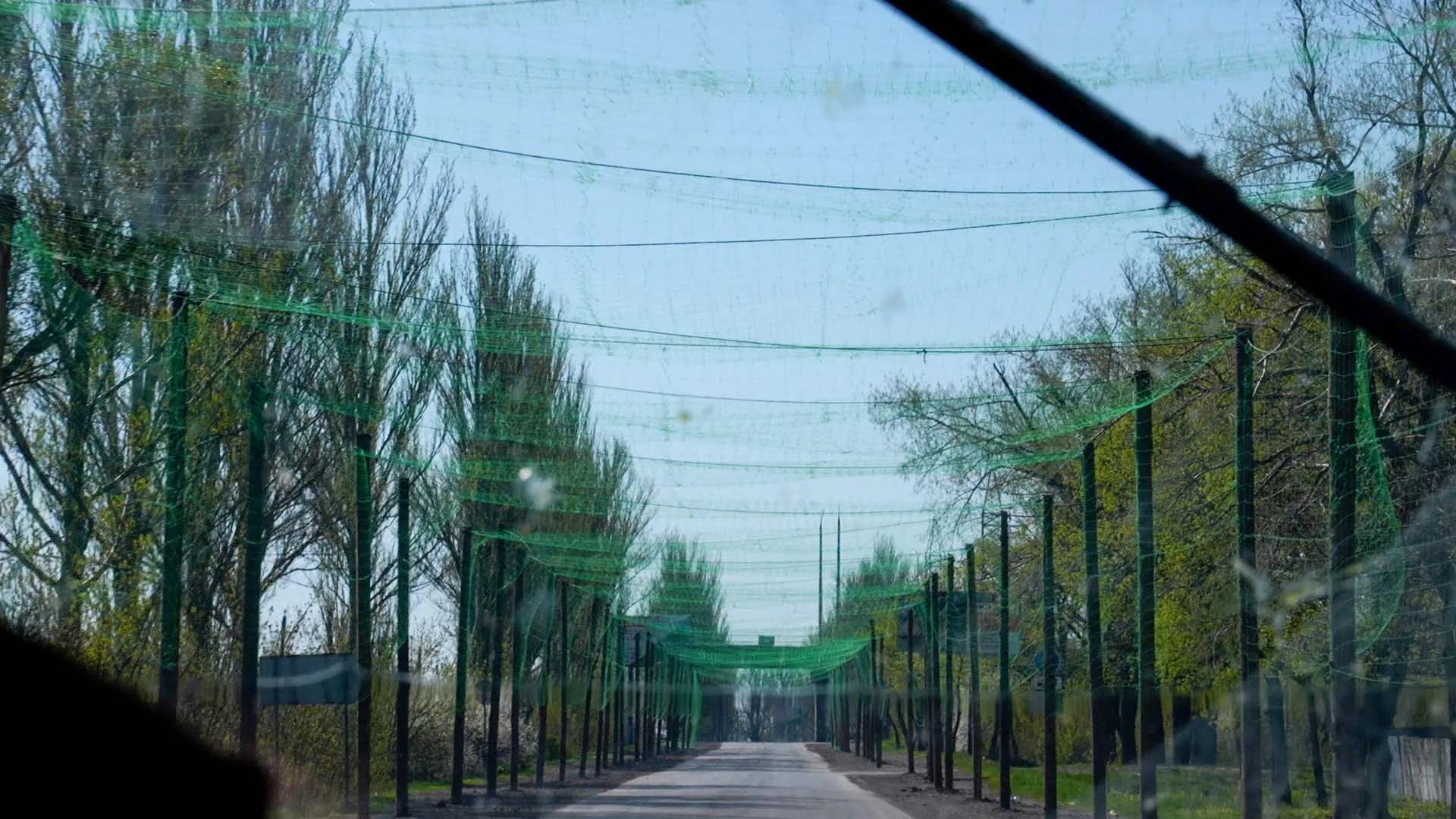
Politics
Fortress explanation: How Western Donetsk became the key to Ukraine’s survival in the Trump-Putin era
From our correspondent in Kyiv, with additions from Washington and MoscowIn the shadows of Alaskan icy winds, where Presidents Donald Trump and Vladimir Putin met on August 15 at a summit that was supposed to be a turning point in the Ukraine war, a drama is unfolding that could redraw the map of Europe. According to sources close to the negotiations, Putin proposed to "freeze" the conflict in exchange for the surrender of the rest of Donetsk Oblast — territory that Russia controls roughly 70% of after more than a decade of bloodshed. But for Kyiv, this is not just a piece of land: it is a "belt of fortresses," the last stronghold blocking Russian aggression and potentially a staging ground for future attacks. Insiders at the White House say Trump views this as a "big deal," but European leaders, including the new head of European diplomacy, Kaja Kallas, warn: this is a trap that will only stoke Kremlin's appetite.This proposal, voiced amid intense Russian attacks — including massive drone and missile strikes on Ukrainian cities — underscores Kremlin cynicism. Putin, who continues escalation even after the summit, demands not only Donbas but also Ukraine's renunciation of NATO, neutrality, and a ban on Western troops on its territory. In return, he promises to "freeze" the front lines in Kherson and Zaporizhzhia regions and to return small pieces of Kharkiv, Sumy, and Dnipropetrovsk. President Volodymyr Zelensky rejected this categorically, calling Donbas a "matter of survival" and demanding clear security guarantees from allies within 7-10 days. "This is not negotiations, but blackmail," he stated, emphasizing that ceding territory will only encourage Putin to seize more.Donetsk Oblast, the heart of industrial Donbas, has long since turned into a battlefield where the economy is destroyed and lands are littered with minefields, which, according to Dr. Marnie Goughlett of Oxford University, make recovery impossible for at least decades. Ukraine still controls about 6,600 square kilometers here — an area populated by a quarter of a million people, including key cities like Kramatorsk, Sloviansk, Kostiantynivka, and Druzhkivka. These urban centers, connected by railways and roads, form a "belt of fortresses" — a 50-kilometer defensive line built over 11 years of effort, investment, and human sacrifice. According to the Institute for the Study of War (ISW), this is a network of trenches, bunkers, minefields, anti-tank barricades, and barbed wire that stymies Russian advances toward Pervomaisk. "Russia will need years to break through it," say ISW analysts, highlighting that surrendering this zone would destroy Ukraine's main defensive line, leaving it vulnerable to deeper invasions.The military significance of this territory extends beyond concrete and steel. Terrain plays a key role: elevations, as in Chasiv Yar — a city recently claimed by Russians but still held by Ukrainians — allow coordination of artillery fire, drones, and radio communications. Niall Reynolds of the Royal United Services Institute (RUSI) explains: "Donetsk is on a high ground, and further west the terrain slopes downward, making it harder for Ukrainians to defend. But the heights of Chasiv Yar are one of the last advantages supporting the line." Without these positions, Ukraine would lose not only observation but also the ability to carry out tactical missions, relying solely on satellite intelligence from partners. Insider sources in the Pentagon, whom I spoke with, add that commercial satellite reconnaissance, while helpful, will not replace direct control of the terrain — especially as Russia intensively employs drones and electronic warfare.Why does Russia need all of Donetsk so badly? It’s not just a symbolic victory — completing the "liberation" of Donbas, as Putin has proclaimed as his goal. Capturing the western part would allow Moscow to solidify its hold, avoid further losses, and create a springboard for future offensives. The front here is just one of the sectors along an 1100-kilometer line, but it is here that the fiercest battles have unfolded this summer. As Reynolds notes, redeploying forces to the south or north won't yield better results: "The Zaporizhzhia region has similar deep defenses, and to the north, the Russians face the same problem." ISW warns that even if Russia shifts tactics to slow encirclement, as around the "belt of fortresses" near Dniprovske, it does not guarantee quick victory — but surrendering by agreement would make this redundant.In theory, Ukraine could retreat westward and build new fortifications — with civilian contractors, without shelling. But reality is harsher: unfavorable terrain will persist, and construction time will be measured in years. Reynolds is skeptical: "I don’t see Ukrainian forces ceding this territory without a fight." Insider sources in Kyiv, with whom I spoke, emphasize that even pressure from the Trump administration — through aid cuts or "security guarantees" — will not force Zelensky to capitulate. "Russia's previous behavior shows that any concession invites new aggression," they say. European leaders like Kallas, who herself is under Kremlin's "search," describe the summit as "Putin’s laughter" and urge not to fall into the trap of territorial concessions.Ultimately, the "belt of fortresses" is not just a line on a map but a symbol of Ukraine’s resilience in a bloody conflict that has claimed millions of lives and forced millions to flee. If Trump and Putin impose "peace" at the expense of Donetsk, it will not only trigger a new wave of refugees but also weaken Europe in the face of Russian threats. As one EU official said: "This is not a deal — it’s surrender." The Alaskan summit showed that the real stakes are not in diplomatic smiles but in the trenches of Donbas, where the future of the continent is decided by bullets and concrete.
22.08.2025
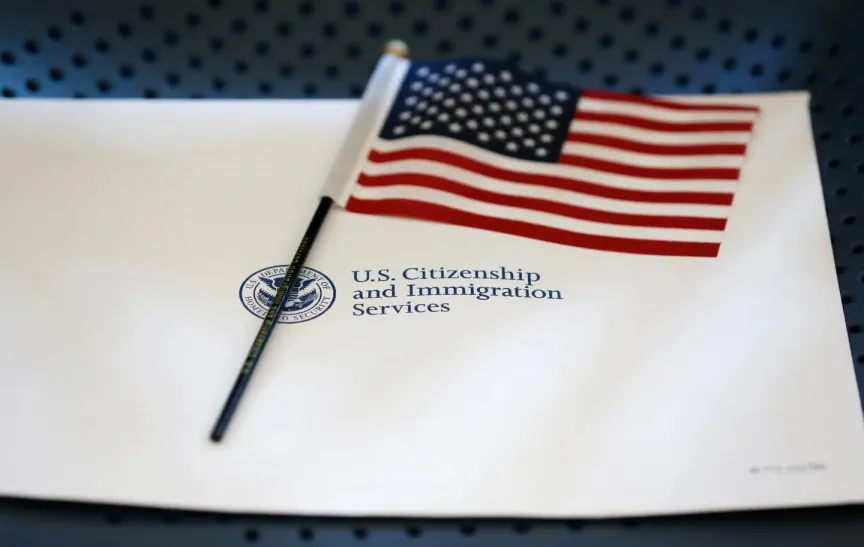
Politics
The USA Strengthens Immigration Control: "Anti-Americanism" Could Close Doors for Thousands of Immigrants
In a significant tightening of immigration policies reflecting the Trump administration's priorities concerning national security and ideological purity, the United States Citizenship and Immigration Services (USCIS) announced an update to its guidelines, now requiring consideration of "anti-Americanism" as a key negative factor when evaluating immigration benefits applications. This update, which takes effect immediately, expands social media screening and grants immigration officers broader discretionary power to deny visas, green cards, and other privileges to those they believe promote views hostile to American values.
According to insiders within the Department of Homeland Security, this move is a logical continuation of Trump’s efforts from his first term, when measures such as the ban on entry from Muslim-majority countries aimed at "protecting the American way of life." Now, in 2025, with Trump's return to the White House, the policy has become even more stringent, referencing the Immigration and Nationality Act of 1952, which was historically used to combat communist influences during the Cold War. However, experts note that the lack of a clear definition of "anti-Americanism" — whether it refers to criticism of U.S. foreign policy, support for protests against Israel, or simply disagreement with government institutions — could turn this tool into a subjective weapon reminiscent of the dark days of McCarthyism in the 1950s.
The updated USCIS Policy Manual, published in Volume 1, details the factors officers will consider in discretionary decisions. These include past statements on parole, involvement in terrorist or anti-American organizations, and any evidence of anti-Semitic activity. "American benefits should not be granted to those who disdain the country and promote anti-American ideologies," said USCIS spokesperson Matthew Trageser in a statement that reads like a loyalty manifesto. "Immigration privileges, including the right to live and work in the U.S., remain a privilege, not a right." Trageser emphasized that the agency aims to "eradicate anti-Americanism" through strict vetting procedures, which, according to sources within the agency, include an in-depth analysis of social media to uncover "any signs of hostility towards Americans, their culture, government, or fundamental principles".
This expansion of social media screening, introduced back in June, now covers a broader range of applications, from student visas to EB-5 investor programs. According to USCIS, over 6,000 student visas have already been revoked since the beginning of the year, many of which are suspected of supporting terrorism or ideological violations. For business immigrants, such as EB-5 participants, the update clarifies how discretionary powers will be applied in cases of fraud, deception, or threats to national interests — a domain where, based on my observations, past corruption scandals, such as abuses in "golden visa" programs, have already resulted in thousands of denials.
However, this policy has already sparked criticism from human rights advocates and experts who see it as a threat to freedom of speech and a potential tool for discrimination. Aaron Riehlinn-Melnik, a senior researcher at the American Immigration Council, compared the update to McCarthyism, noting that the term "anti-Americanism" has no precedent in immigration law and could be used to persecute dissenters. "This is a return to an era when fear of the 'red threat' justified witch hunts," he said, referencing historical parallels from the 1950s. Immigration attorney Steven Brown added that the subjectivity of such assessments contradicts principles of fairness, since "American values" are not codified in law. Sociology professor Jane Lillie Lopez warned that the policy opens the door to stereotypes and prejudices, forcing applicants to prove their "loyalty" in a manner reminiscent of totalitarian regimes.
Insiders within Congress indicate that Democrats in the House are already preparing hearings, arguing that such measures could deter talented immigrants who contribute to the U.S. economy — from Silicon Valley tech geniuses to EB-5 investors whose funds finance infrastructure projects. It is estimated that hundreds of thousands of applications could be affected annually, especially from Middle Eastern and Latin American countries where anti-American sentiments often intertwine with local political movements.
While supporters, including Republican legislators, praise the update as a necessary step to protect national identity, critics fear it will turn the immigration system into a tool of ideological control. As a veteran journalist who has covered immigration battles from Obama to Biden, I can say: this is not merely bureaucratic change — it’s a signal about how America defines who is "worthy" of being part of its fabric. In a world where social networks capture every thought, the line between free expression and "anti-Americanism" is becoming ever thinner, and the consequences for global mobility could be profound.
20.08.2025
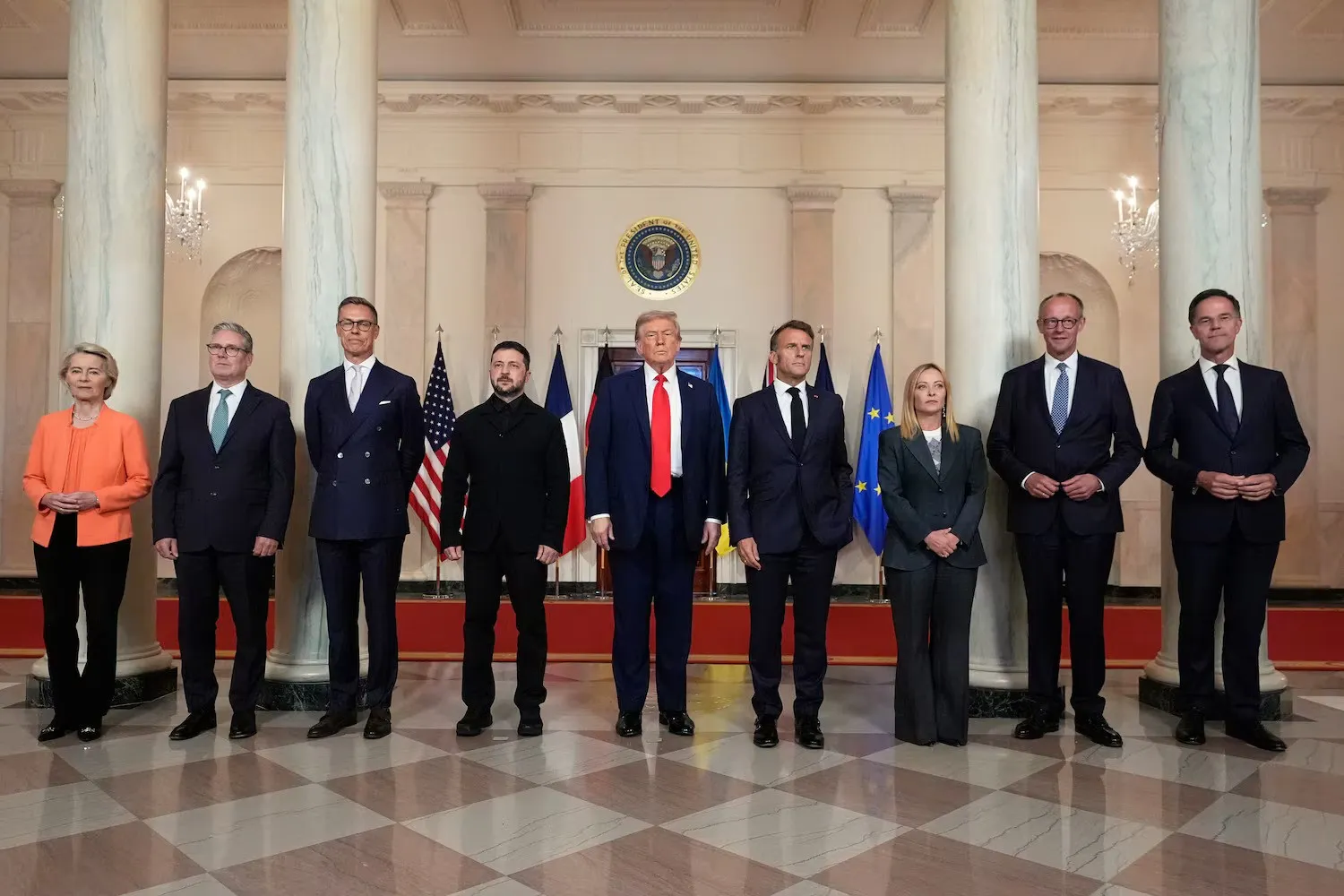
Politics
Trump and Zelensky: A Diplomatic Dance on the Edge of Peace in Ukraine
Washington — In the White House, where diplomacy often turns into a high-class theater, President Donald Trump and his Ukrainian counterpart Volodymyr Zelensky held talks that could become a turning point in the protracted war in Europe. With smiles on their faces and compliments on their lips, the leaders discussed security guarantees, territorial compromises, and a potential meeting with Vladimir Putin—all against the backdrop of European allies who arrived to support Kyiv's position. But behind the facade of politeness lie deep disagreements, which, according to insiders from the White House, could either accelerate peace or return the conflict to even greater chaos.We can say: these negotiations resemble the classic Trump style — brilliant promises, avoidance of details, and emphasis on personal relationships. Unlike the failed February meeting, when Trump publicly reproached Zelensky for lack of “cards” in his hand, this time the atmosphere was unexpectedly constructive. Trump, known for his love of flattery, did not hold back: “I can’t believe it — I like it,” he said, commenting on Zelensky’s appearance, who this time chose a strict suit instead of an informal sweater. According to my sources in diplomatic circles, this advice to Zelensky was given by British Prime Minister Rishi Sunak, emphasizing the importance of gratitude and etiquette — a lesson the Ukrainian leader learned brilliantly, uttering “thank you” 16 times during the introductory part.But behind these superficial gestures lies a real game. Insiders from the State Department reveal that the Ukrainian delegation arrived with a clear task: to investigate the details of Trump’s secret meeting with Putin in Anchorage. There, according to sources close to the negotiations, Putin insisted on full control over four occupied regions — Donetsk, Luhansk, Kherson, and Zaporizhzhia — claiming that Russian forces could seize the rest of Donetsk oblast by October. Americans, looking at maps, tend to believe these threats, but the reality on the battlefield is different: Russian troops have not been able to breach Ukrainian defenses in key areas such as Kramatorsk and Sloviansk for over ten years. These cities are not just points on a map, but strategic fortresses, behind which lies a route to Kharkiv. According to Ukrainian military analysts, Russian losses near Bakhmut — at least 20,000 killed — make any advance suicidal.Supported by European leaders such as Georgia Meloni from Italy and Alexander Stubba from Finland, Zelensky brought his "cards" to Washington — and they proved convincing. The first: unanimous European solidarity, positioning Ukraine as a shield for the entire continent. “Peace in Ukraine — is peace in Europe,” — emphasized Zelensky, and according to my sources, Trump could not ignore this argument, especially considering his skepticism about NATO. The second card — Kyiv’s military successes, including the “Spiderweb” operation, which destroyed a significant part of Russian strategic aviation, and the recent elimination of a breakthrough near Dobropole. The third, and perhaps most powerful, — the launch of serial production of the "Flamingo" cruise missile, which, according to technical specifications, surpasses Russian "Caliber" missiles and can reach Moscow or St. Petersburg. And finally, the tragic “card” presented by Russia itself: the nighttime attack on Kharkiv, Odesa, and Sumy, where a one-and-a-half-year-old child was killed — an act that shattered Putin's image as a potential peacemaker in Trump’s eyes.Trump promised security guarantees for Ukraine — from Europe, but “in coordination” with the US. According to my contacts in the Pentagon, this could mean intelligence sharing, logistics support, and even air patrols over the Black Sea, but not the deployment of American troops. “All,” — Zelensky succinctly responded to the question about desired guarantees, emphasizing the need for a strong army and commitments from “great countries.” Insiders say that Trump, who previously relied on economic agreements regarding rare earth metals as a deterrent, is now forced to reconsider his stance under European pressure. Final proposals are expected within 10 days, and they could become an NATO Article 5 analog — an attack on Ukraine as an attack on allies.The ceasefire, which Trump previously promoted as a quick solution, has now taken a back seat. “We can reach a peace agreement while they are fighting,” — Trump stated, acknowledging Putin’s arguments about the risks of a pause without clear conditions. Zelensky, in turn, is ready for a compromise: “Without any conditions, we must meet.” The most intriguing moment — preparations for a leaders’ summit. Trump telephoned Putin during the summit and announced the start of planning. Zelensky confirmed his readiness for a bilateral or trilateral format, but the Kremlin, through Yuri Ushakov, remained cautious, only talking about “raising the level of representatives.” German Chancellor Friedrich Merz suggested the meeting could happen in two weeks but added: “Whether Putin has the courage to come — we do not know.”In the sidelines, Trump, forgetting about the microphone, shared with Europeans: “I think he wants to make a deal. No matter how crazy that sounds.” These words, heard by my colleagues, highlight Trump’s optimism — but also the risks. From my experience, such negotiations often end not with peace but with a new wave of tensions. Will this meeting bring us closer to peace, or is it just an illusion? The answer depends on whether leaders find common ground behind closed doors — and whether they are willing to pay the price for a genuine compromise.
19.08.2025